How AI Ticketing Systems Simplify Help Desk Operations
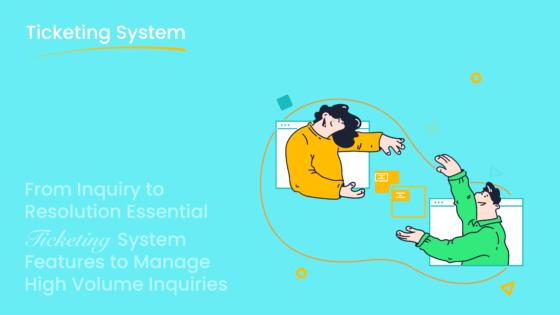
Traditional help desk management often struggles with inefficiencies. Manual processes delay responses, while overwhelmed teams face challenges in managing high ticket volumes. Fragmented communication channels and repetitive tasks further hinder productivity. These issues impact customer satisfaction and operational efficiency.
AI ticketing systems revolutionize help desk management by automating workflows and improving response times. Businesses using AI report a 60% decrease in resolution times and a 50% boost in first-call resolutions. Sobot’s AI-powered ticketing system enhances customer support solutions by unifying communication channels, automating tasks, and delivering actionable insights, helping you improve help desk operations effectively.
Understanding AI Ticketing Systems
What Is an AI Ticketing System?
An AI ticketing system is a modern tool designed to streamline help desk management. It uses artificial intelligence to automate ticket creation, routing, and resolution processes. Unlike traditional systems, which rely heavily on manual effort, AI ticketing systems handle repetitive tasks efficiently. This allows your support team to focus on more complex customer issues.

For example, Sobot’s AI-powered ticketing system integrates multiple communication channels like email, voicemail, and chat into one platform. This unified approach ensures that no customer query gets overlooked. By automating workflows, it reduces response times and improves the overall efficiency of your help desk solutions.
How AI Ticketing Systems Work
AI ticketing systems operate by leveraging advanced technologies like natural language processing (NLP) and machine learning. When a customer submits a query, the system automatically categorizes and prioritizes the ticket based on urgency and complexity. It then routes the ticket to the most suitable agent or resolves it using AI automation if it’s a simple issue.
Here’s a comparison of how AI ticketing systems outperform traditional methods:
| Metric | Traditional Ticketing | AI-Powered Ticketing |
|---|---|---|
| Response Time | Hours to days | Instant to a few hours |
| Resolution Time | Slower due to manual processing | Faster with automation |
| Scalability | Requires hiring more agents | Handles large volumes automatically |
| Customer Satisfaction | Prone to delays and generic experiences | Higher satisfaction due to speed & accuracy |
This efficiency makes AI ticketing systems a game-changer for help desk management.
Key Features of AI Ticketing Systems
Modern AI ticketing systems come packed with features that enhance their functionality. These include:
| Feature | Description |
|---|---|
| Skill-Based Routing | Assigns tickets based on team members' skills. |
| Workflow Automation | Automates ticket assignment and resolution processes. |
| Knowledge Base Integration | Connects or builds a knowledge base for agents and customers. |
| Performance Tracking | Tracks resolution times and customer satisfaction scores. |
| Customer Satisfaction Management | Measures customer satisfaction through surveys and ratings. |
| Third-Party Integrations | Connects with various communication channels and backend systems. |
| Automated Ticket Categorization | AI categorizes tickets based on customer inquiries. |
| Automated Resolution of L1 Queries | Handles Level 1 queries, freeing agents for complex issues. |
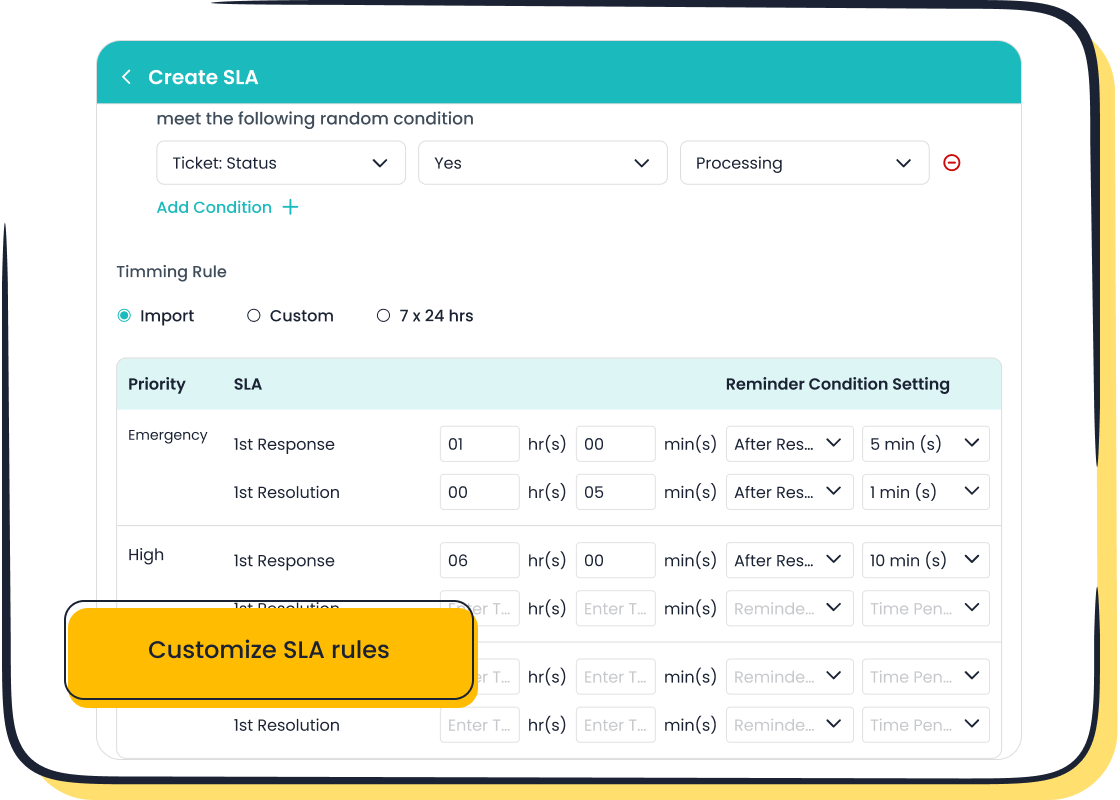
Sobot’s AI ticketing system incorporates these features and more. For instance, it offers multilingual support, SLA management, and trusted analytics to monitor performance. These tools not only improve your help desk operations but also enhance customer satisfaction.
Benefits of AI in Help Desk Management

Enhanced Efficiency and Productivity
AI transforms help desk management by automating repetitive tasks and streamlining workflows. You can deflect up to 90% of basic questions using AI-powered tools, freeing your agents to focus on complex issues. This automation reduces manual effort and improves agent productivity significantly.
For example, Grove Collaborative implemented AI-driven chatbots to present help center articles, enabling customers to resolve issues independently. This reduced live chat volumes by over 80%, allowing agents to handle more critical tasks. Similarly, Premier Financial Bancorp, Inc. adopted a unified ticketing system that centralized IT purchase management and introduced a self-service portal. These changes improved efficiency across multiple locations and reduced calls to the help desk.
| Company | Challenges | Solutions and Outcomes |
|---|---|---|
| Grove Collaborative | Needed AI features for intelligent triage. | Omni-channel messaging reduced chat volumes by over 80%. |
| Premier Financial Bancorp, Inc. | Needed a unified ticketing and management system. | Self-service portal reduced calls, allowing technicians to focus on productive tasks. |
Faster Response Times and Resolutions
AI ticketing systems improve response times by automating ticket routing and prioritization. When you integrate AI into your help desk, ticket resolution times can drop by 45%, decreasing from 4.2 hours to 2.3 hours. This speed ensures customers receive timely support, enhancing their overall experience.
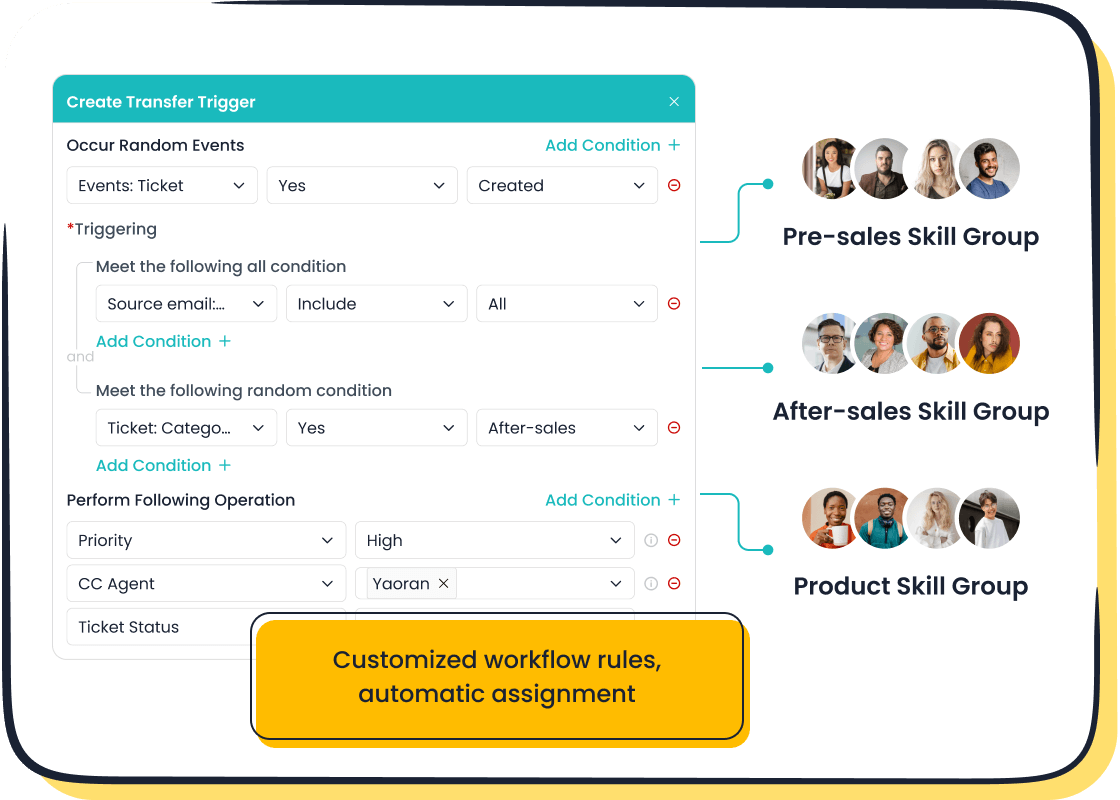
AI-powered systems like Sobot’s Ticketing System use intelligent triggers to assign tickets to the right agents instantly. By categorizing tickets based on urgency, the system ensures faster resolutions. This approach not only improves response times but also boosts operational efficiency.
- 45% reduction in ticket resolution times.
- Instant routing of tickets to suitable agents.
- Faster resolutions for Level 1 queries through automation.
Improved Customer Satisfaction
AI help desk systems enhance customer satisfaction by delivering personalized and efficient support. Over 97% of communication service providers report a positive impact of conversational AI on customer satisfaction. AI reduces wait times, speeds up issue resolution, and provides tailored responses, ensuring customers feel valued.
Sobot’s AI ticketing system integrates multilingual support and SLA management to meet diverse customer needs. It also uses analytics to monitor satisfaction levels, helping you refine your support strategies.
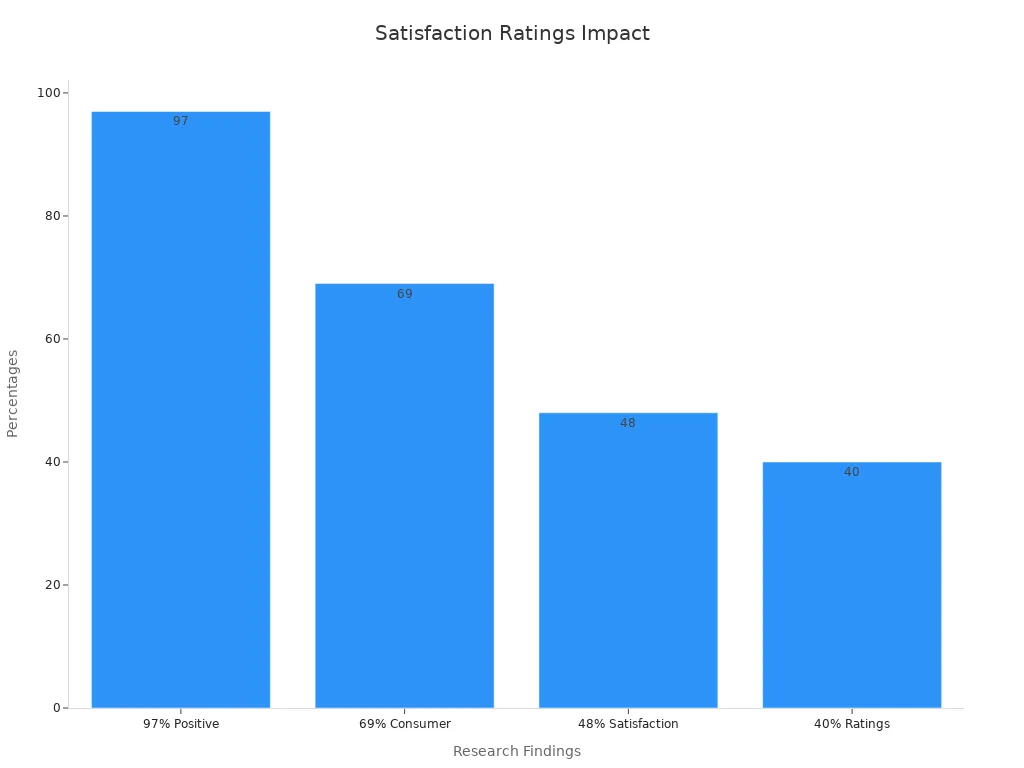
By adopting AI service desk solutions, you can achieve higher satisfaction rates, improve agent productivity, and reduce operational costs. These benefits make AI an essential tool for modern help desk management.
Cost-Effectiveness and Scalability
AI ticketing systems offer significant cost savings and scalability, making them an ideal solution for modern help desk management. By automating repetitive tasks, these systems reduce the need for additional staffing, allowing you to allocate resources more effectively. This not only lowers operational costs but also enhances productivity by enabling your team to focus on complex customer issues.
Businesses adopting AI-powered customer support solutions report average cost savings of 50-70% compared to traditional models. Automation of recurring inquiries plays a key role in achieving these savings. For instance, companies have seen annual cost reductions ranging from €25,000 to €250,000, depending on their size and the volume of customer inquiries. Moreover, the return on investment (ROI) for AI solutions often becomes evident within the first 6-12 months, making it a financially sound choice.
Scalability is another major advantage of AI in service desk operations. Traditional systems struggle to handle sudden spikes in ticket volumes, especially during peak periods. AI ticketing systems, however, adapt seamlessly to increased demand without compromising response times or service quality. For example, Sobot’s AI ticketing system integrates automation and intelligent routing to manage high volumes efficiently. Its multilingual support and SLA management ensure consistent customer satisfaction, even as your business grows.
By implementing AI help desk solutions, you can achieve both cost-effectiveness and scalability. These systems not only reduce expenses but also improve service desk efficiency, ensuring your help desk remains agile and responsive to customer needs.
Practical Applications of AI Ticketing Systems
Automated Ticket Routing and Prioritization
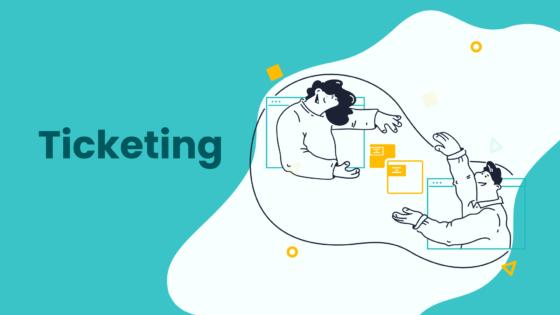
Automated ticketing systems revolutionize how tickets are routed and prioritized. AI analyzes ticket content and urgency to assign tasks to the most suitable agent. This ensures faster responses and better efficiency. For example, Sobot’s AI-powered ticketing system uses intelligent triggers to route tickets instantly, reducing delays and improving customer satisfaction.
Automation in ticketing also helps manage high volumes during peak times. AI categorizes tickets based on complexity and urgency, ensuring critical issues receive immediate attention. Businesses using automated ticket triaging report up to a 40% improvement in response times and a significant increase in first-contact resolution rates. This not only enhances productivity but also reduces agent burnout.
| Performance Metric | Manual Routing | Automated Routing | Typical Improvement |
|---|---|---|---|
| Response Time | High & Variable | Low & Consistent | Up to 40% |
| First Contact Resolution Rate | Low | High | Significant Increase |
| Agent Burnout Rate | High | Low | Significant Decrease |
| Customer Satisfaction | Variable | High & Consistent | Significant Increase |
AI-Powered Chatbots for Instant Support
AI-powered chatbots provide instant support by handling common inquiries and automating ticket creation. These chatbots operate 24/7, ensuring customers receive immediate assistance without waiting for human agents. For instance, Sobot’s chatbots integrate seamlessly with its ticketing system, offering real-time updates and proactive resolutions.
Chatbots also enhance self-service options. Customers can troubleshoot simple issues independently, reducing the workload on your support team. Statistics show that businesses using chatbots experience a 20%-30% reduction in resolution times. Additionally, chatbots continuously learn from interactions, improving their ability to provide personalized assistance over time.
| Benefit Type | Description |
|---|---|
| Instant Responses and Always-On Availability | Chatbots provide 24/7 support, eliminating delays caused by waiting for human staff to respond. |
| Automated Ticket Creation and Management | Chatbots automate ticket creation and categorization, speeding up the response process and reducing human error. |
| Self-Service Troubleshooting | Users can resolve simple issues independently, drastically reducing resolution time without waiting for human help. |
Sentiment Analysis for Customer Insights
Sentiment analysis uses AI to evaluate customer emotions during interactions. This provides valuable insights into customer satisfaction and helps you identify areas for improvement. For example, Sobot’s AI tools analyze customer feedback in real-time, enabling quick adjustments to enhance service quality.
By identifying trends in customer sentiment, businesses can make informed decisions to improve their support strategies. Sentiment analysis also boosts customer retention by addressing issues promptly. Companies using this technology report higher satisfaction rates and improved loyalty.
| Benefit | Description |
|---|---|
| Improved Customer Experience | Automated sentiment analysis optimizes customer interactions, leading to enhanced satisfaction. |
| Real-time Feedback | AI provides immediate insights into customer sentiment, allowing for quick adjustments. |
| Trend Identification | Businesses can analyze trends over time, helping to inform better decision-making and strategies. |
| Increased Customer Retention | By addressing issues promptly, companies can improve loyalty and retention rates. |
Predictive Analytics for Anticipating Needs
Predictive analytics helps you anticipate customer needs by analyzing historical data and identifying patterns. AI-powered systems use machine learning models to refine predictions over time, enabling your help desk to shift from reactive to proactive support. For example, if recurring issues appear in your ticketing system, predictive analytics can suggest long-term solutions instead of repetitive fixes. This approach improves efficiency and reduces downtime.
Proactive incident detection is another advantage. AI analyzes past incidents to forecast potential disruptions, allowing your team to address issues before they escalate. This capability ensures smoother operations and enhances customer satisfaction. Businesses using predictive analytics report significant improvements in response times and service quality.
| Evidence Type | Description |
|---|---|
| Historical Data Analysis | Identifies recurring issues, enabling long-term solutions rather than repetitive fixes. |
| Machine Learning Models | Refines predictive accuracy over time, enhancing forecasting and prevention strategies. |
| Proactive Incident Detection | Shifts from reactive to proactive resolution by analyzing historical incident data. |
Sobot’s AI ticketing system incorporates predictive analytics to optimize workflows and anticipate customer needs. By leveraging this technology, you can enhance operational efficiency and deliver faster responses to your customers.
Integration with Self-Service Portals
Integrating AI ticketing systems with self-service portals empowers your customers to resolve issues independently. AI tools provide instant access to FAQs, troubleshooting guides, and automated solutions, reducing the need for human intervention. This automation not only improves efficiency but also lowers operational costs by up to 30%.
Self-service portals handle up to 80% of basic inquiries, ensuring faster resolution times and shorter wait periods. Customers benefit from quick responses, while your agents focus on complex issues. Enhanced user experiences through AI-driven self-service tools also contribute to higher satisfaction levels.
- AI-powered self-service can reduce operational costs by up to 30%.
- AI tools can resolve 80% of basic service inquiries, leading to faster resolution times.
- Enhanced user experiences through AI contribute to improved customer satisfaction.
Sobot’s omnichannel solution integrates seamlessly with self-service portals, offering multilingual support and proactive insights. This combination ensures your customers receive timely assistance while your team maintains high productivity.
Implementing AI Ticketing Systems Effectively
Assessing Help Desk Needs and Goals
Before implementing AI in your help desk, you need to evaluate your current operations. Start by identifying the challenges your team faces. Are response times too slow? Do repetitive tasks overwhelm your agents? Use help desk metrics to pinpoint these issues. Metrics like Customer Effort Score (CES) surveys can reveal areas where customers struggle, such as troubleshooting or returning items. Tracking these indicators ensures you focus on the right improvements.
Service desk metrics also highlight your strengths and weaknesses. For example, consistent analysis of ticket resolution times and customer satisfaction scores can guide your decisions. This data-driven approach helps you set clear goals, like reducing response times or improving customer satisfaction by a specific percentage. By understanding your needs, you can create a roadmap for integrating AI effectively.
Choosing the Right AI Solution (e.g., Sobot Ticketing System)

Selecting the right AI solution is crucial for achieving your goals. Look for a system that aligns with your needs and offers features like automation, multilingual support, and predictive analytics. For instance, Sobot’s AI-powered ticketing system integrates communication channels like email and chat into one platform. It automates ticket routing and resolution, reducing response times and improving efficiency.
Consider scalability when choosing a solution. AI systems like Sobot’s adapt to high ticket volumes during peak periods without compromising service quality. Additionally, tools that provide trusted analytics and SLA management ensure you meet customer expectations consistently. Businesses using AI-based customer service have reported up to a 33% increase in satisfaction, according to Harvard Business Review. By choosing a robust solution, you can enhance both productivity and customer experience.
Training Teams for AI Integration
Training your team is essential for a smooth transition to AI. Start by explaining how AI will improve their workflows and reduce repetitive tasks. Focus on building their confidence in using the new system. Effective training programs measure outcomes through metrics like reaction, learning, and behavior changes. For example:
| Metric Type | Description |
|---|---|
| Reaction | Gauges team engagement and satisfaction with the training. |
| Learning | Assesses knowledge and skills gained during the sessions. |
| Behavior | Observes how well employees apply new skills in their daily tasks. |
| Results | Evaluates the impact on productivity and customer satisfaction. |
Sobot provides resources like FAQs and self-service options to help teams adapt quickly. By investing in training, you ensure your team uses AI tools effectively, leading to better customer support and operational efficiency.
Monitoring and Optimizing AI Performance
Monitoring the performance of your AI system is essential to ensure it delivers consistent results. By tracking key metrics, you can identify areas for improvement and maximize efficiency. Regular monitoring also helps you maintain high customer satisfaction and ensures your help desk operations remain effective.
Key Performance Indicators (KPIs) for AI Monitoring
To evaluate your AI system, focus on measurable KPIs. These indicators provide insights into how well the system supports your help desk. Below is a table of commonly used KPIs:
| KPI | Description |
|---|---|
| Time savings | Reduction in time needed to complete tasks after AI implementation, improving productivity. |
| Revenue growth | Measures growth in sales and new business opportunities generated with AI assistance. |
| Customer satisfaction | Tracks improvements in customer experience post-AI implementation. |
| Employee productivity | Measures increase in output per employee after AI implementation. |
| Customer effort score | Indicates how easy it is for users to achieve their goals using the AI system. |
| Task success rate | Percentage of successfully completed tasks by any end user, indicating AI effectiveness. |
| Time on task | Measures the time users take to complete tasks using the AI solution. |
| User retention rate | Percentage of users continuing to use the AI system, indicating user satisfaction. |
| Latency | Measures AI’s response time, with lower latency indicating better user experience. |
| Helpdesk inquiries | Number of received support requests, with fewer inquiries indicating a user-friendly experience. |
These KPIs help you measure the impact of AI on your help desk. For example, tracking customer satisfaction and response times can reveal how well the system meets user expectations.
Optimizing AI for Better Results
Once you’ve identified performance gaps, take steps to optimize your AI system. Start by analyzing data from KPIs like latency and task success rate. If response times are slow, consider refining automation workflows or upgrading system capabilities. Sobot’s AI ticketing system, for instance, uses intelligent triggers and predictive analytics to enhance efficiency and reduce delays.
Regular updates and training are also crucial. Ensure your team understands how to use the AI system effectively. Sobot provides resources like FAQs and self-service tools to help teams adapt quickly. By combining monitoring with proactive optimization, you can ensure your AI system continues to deliver exceptional results.
Future Trends in AI for Help Desk Operations
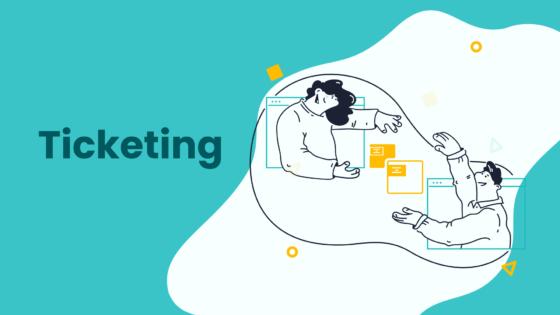
Advancements in Natural Language Processing (NLP)
Natural Language Processing (NLP) continues to transform how you interact with AI ticketing systems. Modern NLP algorithms can categorize and prioritize tickets based on their content. This ensures your customers receive timely and accurate responses. For example, sentiment analysis powered by NLP helps you measure customer satisfaction and identify areas for improvement. Businesses also use NLP to provide multilingual support, making their services accessible to a global audience.
Recent advancements in NLP include real-time data analytics and enhanced machine learning models. These technologies process large volumes of data quickly, enabling immediate trend predictions. By integrating NLP into your help desk, you can improve decision-making and reduce risks. This innovation not only enhances customer support but also increases operational efficiency.
AI-Driven Proactive Support Models
AI is shifting help desk operations from reactive to proactive support. Predictive analytics allows you to anticipate customer needs and address issues before they arise. For instance, AI can analyze historical data to forecast potential disruptions. This helps you resolve problems proactively, improving customer satisfaction.
Several industries already benefit from proactive AI models. In telecommunications, companies like Verizon predict network disruptions and notify customers in advance. This reduces downtime and enhances reliability. Similarly, Hilton uses AI to anticipate guest needs, offering personalized upgrades that improve the customer experience. These examples highlight how proactive support can boost loyalty and retention.
| Industry | Example Description | Outcome |
|---|---|---|
| Telecommunications | Predicts network disruptions and notifies customers. | Reduces downtime and improves reliability. |
| Travel | Anticipates guest needs based on booking data. | Offers personalized upgrades, enhancing satisfaction. |
| Retail | Predicts delivery delays and informs customers. | Reduces frustration and improves shopping experiences. |
Integration with Omnichannel Platforms
Integrating AI with omnichannel platforms ensures seamless customer interactions across multiple channels. This approach allows you to unify communication methods like email, chat, and social media into one system. Customers benefit from consistent support, regardless of their preferred platform.
Omnichannel strategies also deliver measurable results. Businesses adopting these solutions report a 13% increase in average order value and 90% higher customer retention rates. Engagement rates rise by 250%, making omnichannel integration a valuable investment. Sobot’s omnichannel solution exemplifies this trend by combining AI automation with a unified workspace. This integration enhances productivity and ensures your customers receive exceptional support.
Increased Personalization in Customer Support
AI has transformed customer support by enabling highly personalized interactions. Unlike traditional methods, AI uses data analytics to tailor responses based on individual preferences. This approach ensures that every customer feels valued and understood.
AI ticketing systems analyze customer data to predict needs and offer customized solutions. For instance, they review past interactions to recommend products or services that align with a customer’s preferences. Chatbots powered by AI engage in natural conversations, providing tailored recommendations and resolving issues efficiently. Sentiment analysis further enhances personalization by adjusting responses based on customer emotions. This creates a more empathetic and satisfying experience.
Sobot’s AI ticketing system exemplifies this level of personalization. It integrates customer history into its platform, allowing agents to access relevant information instantly. This feature helps your team deliver faster and more accurate support. Additionally, Sobot’s multilingual capabilities ensure that customers receive assistance in their preferred language, further enhancing their experience.
Personalization also boosts customer loyalty. When customers receive tailored solutions, they are more likely to trust your brand and return for future purchases. Studies show that personalized support significantly increases satisfaction and retention rates. By adopting AI-driven tools like Sobot’s ticketing system, you can create meaningful connections with your customers and stand out in a competitive market.
Tip: Use AI tools to analyze customer feedback regularly. This helps you identify trends and refine your support strategies for even better personalization.
AI ticketing systems have revolutionized customer support by enhancing efficiency, reducing response times, and improving customer satisfaction. These systems can boost agent productivity by up to 50% and cut resolution times by 40-60%. They also deflect up to 40% of tickets through self-service options, enabling your team to focus on complex issues. Faster responses and accurate solutions lead to a 15-25% improvement in customer satisfaction scores, making AI an essential tool for modern help desks.
Adopting solutions like Sobot's AI ticketing system ensures your business stays competitive. Its unified platform, automation capabilities, and multilingual support streamline operations and deliver exceptional customer experiences. By leveraging AI, you can reduce costs, scale operations, and provide personalized support that meets customer expectations.
Explore AI-powered tools today to transform your help desk operations and elevate customer satisfaction to new heights.
FAQ
What makes AI ticketing systems better than traditional ones?
AI ticketing systems automate repetitive tasks, reducing response times by up to 60%. They prioritize tickets based on urgency and route them to the right agents. For example, Sobot’s Ticketing System integrates communication channels, ensuring no query gets missed. This boosts efficiency and customer satisfaction.
Can AI ticketing systems handle multilingual support?
Yes, AI ticketing systems like Sobot’s offer multilingual support. They translate tickets into multiple languages, allowing you to serve a global audience. This feature ensures customers receive assistance in their preferred language, improving accessibility and satisfaction.
How do AI ticketing systems improve customer satisfaction?
AI systems provide faster responses, personalized solutions, and proactive support. For instance, Sobot’s system uses intelligent triggers to resolve Level 1 queries instantly. This reduces wait times and enhances the overall customer experience, leading to higher satisfaction rates.
Are AI ticketing systems cost-effective?
Yes, AI ticketing systems reduce operational costs by automating tasks and minimizing the need for additional staff. Businesses using AI solutions like Sobot’s report cost savings of 50-70%. These systems also scale easily, handling high ticket volumes without extra expenses.
How does Sobot’s Ticketing System ensure data security?
Sobot prioritizes data security with a system stability rate of 99.99%. It complies with industry standards to protect customer information. Trusted analytics and smart notifications further enhance transparency, ensuring your data remains safe and accessible.
See Also
Enhancing Efficiency With AI-Powered Customer Service Solutions
An In-Depth Look At AI Call Center Technologies
Understanding The Efficiency Of Call Center Automation